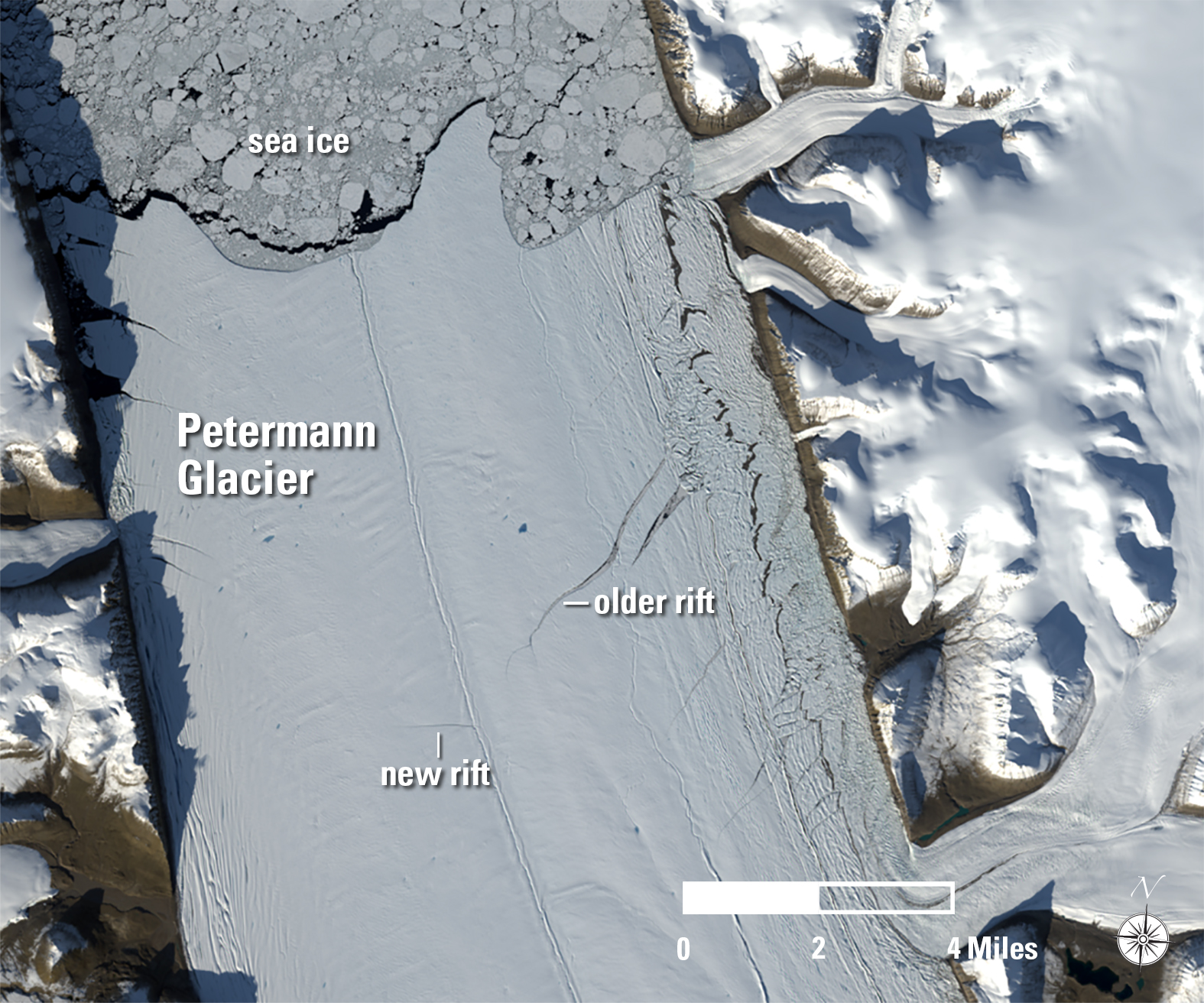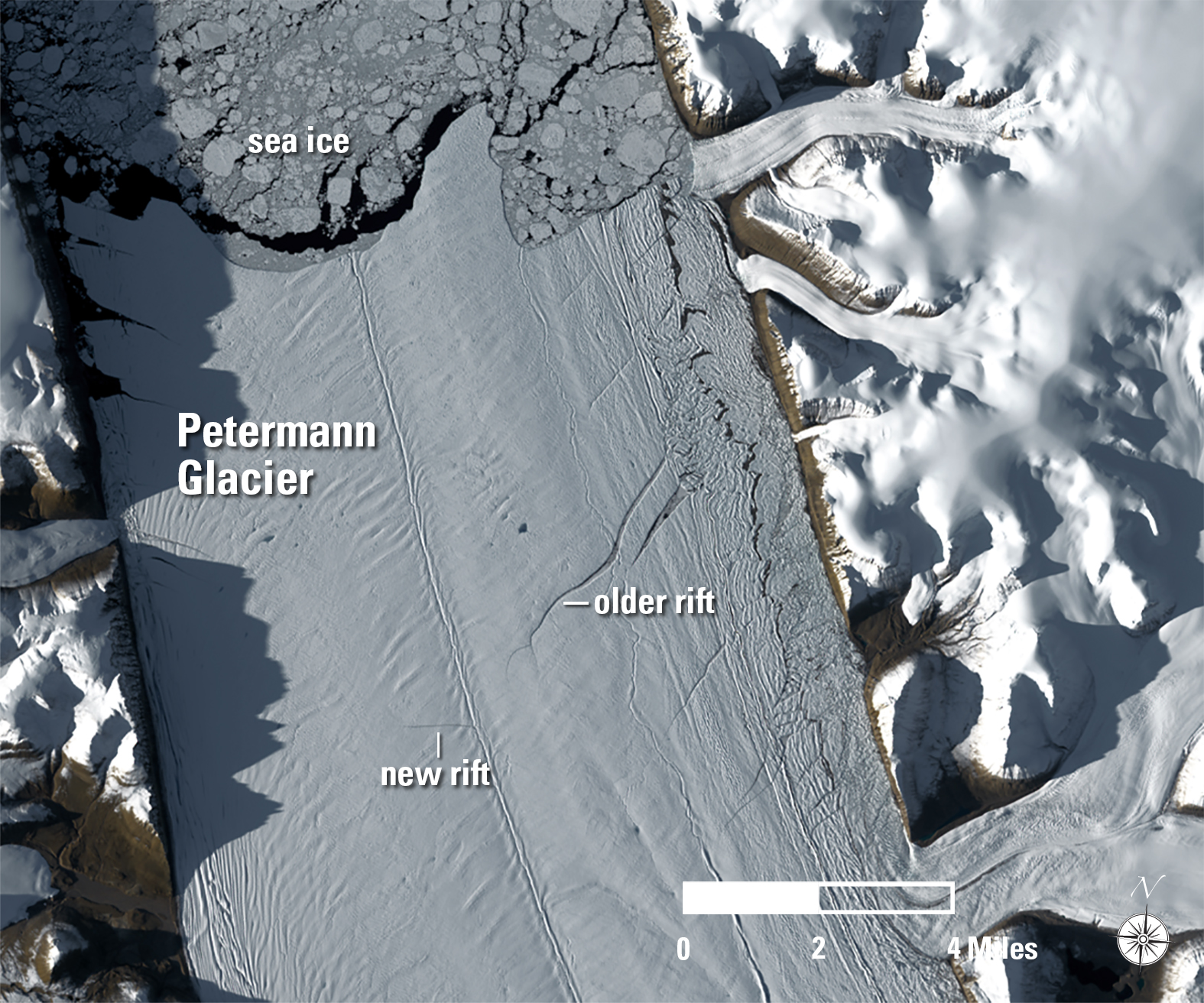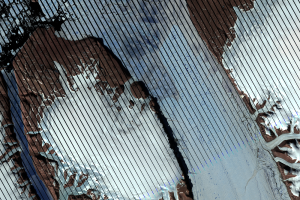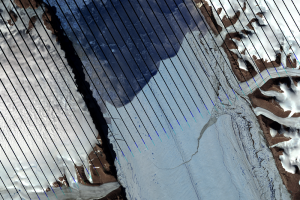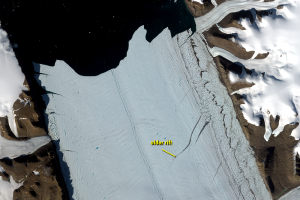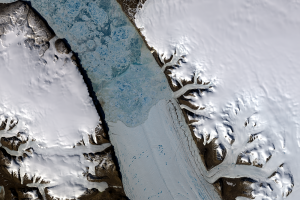Landsat 8 normally images all Earth landmasses every 16 days. However, at high latitudes, there is considerable overlap because Landsat 8’s orbital tracks converge at the Poles. As a result, this increases the temporal frequency of Landsat 8 coverage over northern Greenland.
Building on this imaging overlap, Landsat 8 takes advantage of long hours of daylight in the Arctic to acquire “nighttime” sunlit images, increasing temporal coverage even more. The two Landsat 8 images were acquired a little over 3 hours apart, one on its descending orbit and one ascending. Having multiple images increases the chances of acquiring more cloud-free images and helps scientists monitor iceberg calving events.


